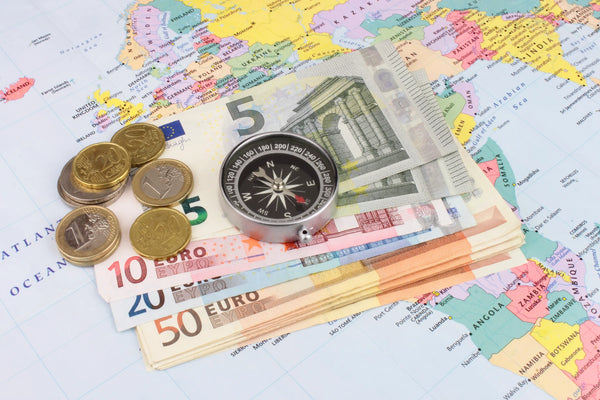How Much Does a Europe Trip Cost from Australia?
Dreaming of exploring the picturesque landscapes of Europe? Planning a trip to Europe from Australia involves careful consideration of expenses, timings, and itinerary. In this article, we will delve into the cost of a Europe trip from Australia, providing you with insights, tips, and estimates to help you plan your journey efficiently. From flights and accommodation to food, transportation, and activities, we've got you covered. So, let's dive in and uncover the average expenses and factors to consider for an unforgettable European adventure.
Table of Contents
- Flights
- Accommodation
- Food
- Transportation
- Activities and Sightseeing
- Miscellaneous Expenses
- FAQs about a Europe Trip from Australia
- 1. What is the best time to visit Europe from Australia?
- 2. Can I find cheaper flights to Europe from Australia?
- 3. How can I save money on accommodation in Europe?
- 4. Are there any hidden costs to consider while planning a Europe trip?
- 5. Is it necessary to purchase travel insurance for a Europe trip?
- 6. How can I make the most of my Europe trip on a budget?
Embarking on a Europe trip from Australia requires careful financial planning. The total cost will depend on various factors such as the duration of your trip, the countries you plan to visit, your preferred level of comfort, and the activities you wish to partake in. However, to give you a rough estimate, a 2-week trip to Europe from Australia can cost anywhere between AUD 5,000 to AUD 10,000 per person, excluding flights. Let's break down the major expenses involved.
Jetting off to Europe soon? Don't leave without checking out our eSIM Europe, designed for hassle-free travel connectivity
Flights
The cost of flights from Australia to Europe can vary depending on the time of year, airlines, and booking flexibility. On average, return flights from Australia to major European cities can range from AUD 1,500 to AUD 2,500 per person. Booking in advance and being flexible with travel dates can help you secure better deals. Websites like Skyscanner and Kayak can assist in comparing prices and finding the best offers.
Accommodation
Accommodation expenses in Europe can vary greatly depending on the country and the type of lodging you choose. On average, a budget traveler can expect to spend around AUD 50 to AUD 100 per night for a modest hotel or hostel room. However, prices can go higher in popular tourist destinations like Paris or Rome. For those seeking more luxurious options, prices can range from AUD 150 to AUD 300 per night for a comfortable hotel room. Websites such as Booking.com and Airbnb offer a wide range of accommodation options to suit different budgets and preferences.
Food
Food expenses in Europe can vary significantly depending on the country and your dining preferences. On average, a meal at an inexpensive restaurant can cost around AUD 15 to AUD 25 per person. If you prefer to cook your own meals or grab quick bites from local markets or food stalls, you can save a considerable amount. Additionally, trying the local cuisine is an essential part of the European experience, so be sure to indulge in some gastronomic delights without breaking the bank.
Transportation
Getting around Europe involves various transportation options, including trains, buses, and flights within the continent. The cost of transportation will depend on the distance traveled, the mode of transportation chosen, and any special offers available. In general, a Eurail pass can be a cost-effective option for exploring multiple countries, with prices starting from AUD 500 for a 10-day continuous pass. Local transportation within cities can vary, but a day pass or a reloadable travel card is usually a convenient and economical choice.
Activities and Sightseeing
Europe offers a plethora of activities and attractions to suit every interest. Entry fees to popular attractions can range from a few euros to over AUD 50. It's important to prioritize the sights you wish to visit and allocate your budget accordingly. Many cities offer free walking tours or discounted museum passes, allowing you to explore the local culture and history without breaking the bank. Researching in advance and taking advantage of online deals can help you save on entrance fees and organized tours.

Miscellaneous Expenses
In addition to the major expenses mentioned above, it's essential to budget for miscellaneous costs such as travel insurance, visa fees (if applicable), local SIM cards, and souvenirs. These expenses can add up, so it's important to include them in your overall budget. Researching and comparing prices for travel insurance providers, checking visa requirements well in advance, and considering the use of local SIM cards or international roaming plans can help you manage these costs effectively.
FAQs about a Europe Trip from Australia
1. What is the best time to visit Europe from Australia?
The best time to visit Europe from Australia is during the European summer, from June to August. The weather is generally pleasant, and many festivals and events take place during this period. However, it is also the peak tourist season, so expect larger crowds and higher prices. Spring (April to May) and autumn (September to October) can be ideal if you prefer milder weather and fewer tourists.
2. Can I find cheaper flights to Europe from Australia?
Yes, it is possible to find cheaper flights to Europe from Australia. Booking in advance, being flexible with your travel dates, and considering alternative airports or connecting flights can help you secure better deals. Additionally, keeping an eye on airline promotions and signing up for fare alerts can increase your chances of finding discounted flights.
3. How can I save money on accommodation in Europe?
To save money on accommodation in Europe, consider staying in budget-friendly options such as hostels, guesthouses, or budget hotels. Booking in advance and being flexible with your travel dates can help you find better deals. Additionally, opting for shared accommodations on platforms like Airbnb can also be a cost-effective choice, especially for groups or families.
4. Are there any hidden costs to consider while planning a Europe trip?
While planning a Europe trip, it's important to consider hidden costs such as local taxes, additional baggage fees, and currency exchange rates. These costs may not be immediately apparent but can impact your overall budget. Researching and budgeting for these additional expenses will help you avoid any surprises during your trip.
5. Is it necessary to purchase travel insurance for a Europe trip?
It is highly recommended to purchase travel insurance for a Europe trip. Travel insurance provides coverage for medical emergencies, trip cancellations, lost luggage, and other unforeseen circumstances. It offers peace of mind and protects you financially in case of any unfortunate events during your trip.
6. How can I make the most of my Europe trip on a budget?
To make the most of your Europe trip on a budget, consider the following tips:
- Research and plan your itinerary in advance to maximize your time and minimize unnecessary expenses.
- Take advantage of free or discounted attractions, walking tours, and local events.
- Opt for affordable dining options such as local markets, street food, and budget-friendly restaurants.
- Utilize public transportation and consider purchasing a travel card or pass for unlimited rides.
- Travel during the shoulder season or offseason to avoid crowds and potentially find better deals on accommodation and flights.
Embarking on a Europe trip from Australia can be an exciting adventure. By considering the estimated costs and planning your budget accordingly, you can make the most of your journey while minimizing financial stress. Remember to research, compare prices, and explore various options for flights, accommodation, transportation, and activities to ensure a memorable and affordable experience. So, start saving and get ready to immerse yourself in the rich history, culture, and beauty of Europe!
Thanks for visiting our blog, are you planing to travel to Europe? Check out our Europe SIM card before you take off.
Before you take off make sure to check with local government of the travel status.









